A decade or so ago, when our kids were growing up in Southwest Houston, the Harris County Flood Control District began the massive excavation that would become the Eldridge Stormwater Detention Basin just a block away from our house. They removed weeds and brush and thicket, and ton after ton of earth. But for a while, there was an island of sorts left in the middle, with a stand of tall, thin trees.
For a couple of seasons, the trees became a rookery for hundreds of white egrets. And along the edges, between the island of trees and the erosion-fighting Bermuda grass, a vast tangle of dewberries appeared.
Dewberries grow wild over much of North America. Rather than growing in arching canes, they trail along the ground and produce small, tart, very dark fruit. They tend to grow where the woods or thicket stops – at the roadside, along train tracks and in abandoned or overgrown lots. In Houston, you can often spot the pink-white flowers in early spring, and if you remember where they are, you can return in the first few weeks of May to harvest the berries
Years ago it became our family tradition to grab plastic buckets and gallon Ziploc plastic bags early Sunday morning and spend Mother’s Day together harvesting dewberries in the detention basin and at the edge of the woods around our neighborhood. More than a few berries went directly in our mouths, but we still managed to bring home enough for several pies. Once you know where the plants are, you can usually return for several weekends and gather additional newly-ripened fruit.
We live in Northwest Houston now, but we can still find dewberries close to our neighborhood. I was able to recently gather about a pound in a few hours, never walking more than a half mile from my house.

Foraging for dewberries is easy. But here are a few things to keep in mind: Dewberries are members of the rose family and closely resemble their blackberry and raspberry cousins. The fruit-bearing runners typically have many small sharp thorns all along the stems, and you should expect a few inevitable pokes and scratches when you’re harvesting the fruit. Smaller children might not find that very much fun.
Ripe dewberries are softer than raspberries and blackberries, and it’s easy to crush them (which is why they’re not a commercial fruit). If you find a patch and pick lots, don’t be surprised if some of the fruit at the bottom of your bag or bucket has been juiced by the weight of the other berries.
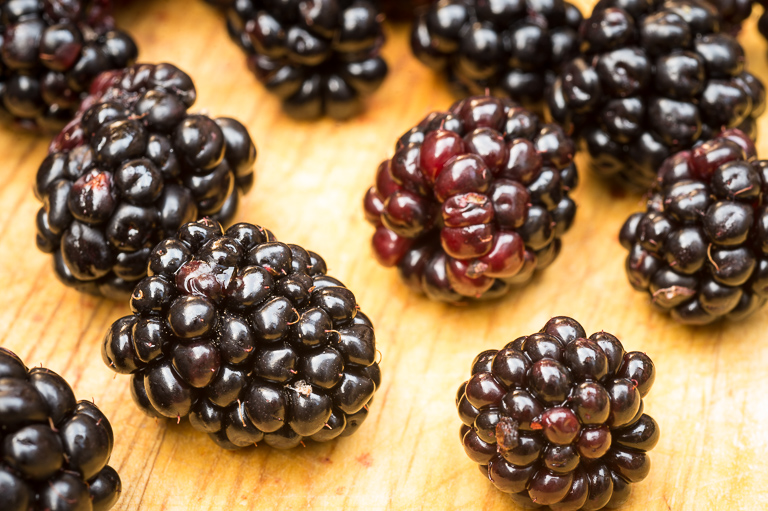
While the oppressive heat and humidity of summer in Houston is still a few months off, do remember to wear sunscreen and appropriate protective clothing to avoid sunburn. A generous amount of mosquito repellent is also a good idea.
And the sunny edges of woods and fields where dewberries grow best are also a great place for snakes to sun themselves. I have only seen harmless speckled kingsnakes when picking dewberries, but there are venomous snakes in Houston, so be alert as you walk through the grass and brush.
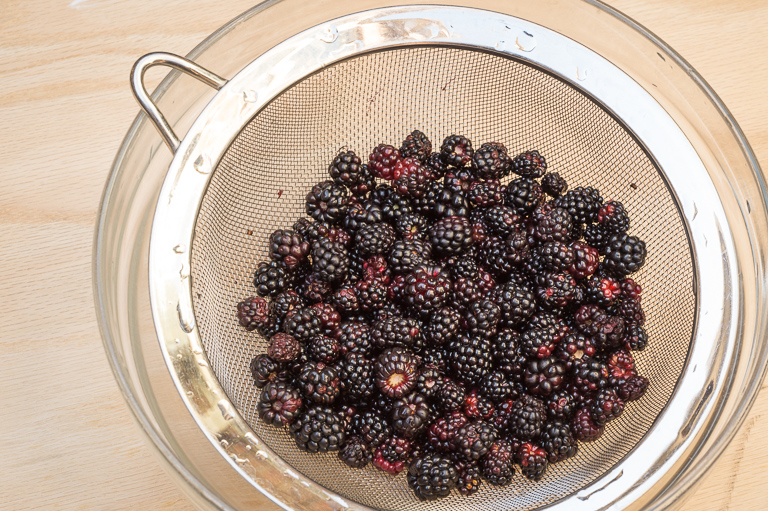
You’ll want to wash your dewberries to remove any dirt, twigs and tiny critters that may have come along for the ride. I put mine into a mesh strainer, put the strainer into a large glass bowl, and gently fill the bowl with cold water. Twigs and bugs float to the top; dirt sinks to the bottom. The berries can be eaten as-is, of course, or with a dollop of whipped cream. But if you brought home a pound or more, you may want to make pies or tarts.
I adopted the following recipe from Greg Case’s Rustic Free-Form Apple Tartlets in Cook’s Illustrated, September & October 1999.
Tart Dough
1 ¼ cups all-purpose flour
2 Tbsp. sugar
¼ tsp. salt
8 Tbsp. (one stick) cold unsalted butter, cut into ½-inch pieces
4 oz. cold cream cheese (half a package), cut into ½-inch pieces
2 tsp. cold lemon juice
Dewberry Filling
2 cups (about one pound) dewberries, washed
½ cup sugar
¼ cup flour
1 tsp. lemon juice
1 Tbsp. butter, melted
1 egg white, beaten
turbinado or sparkling sugar
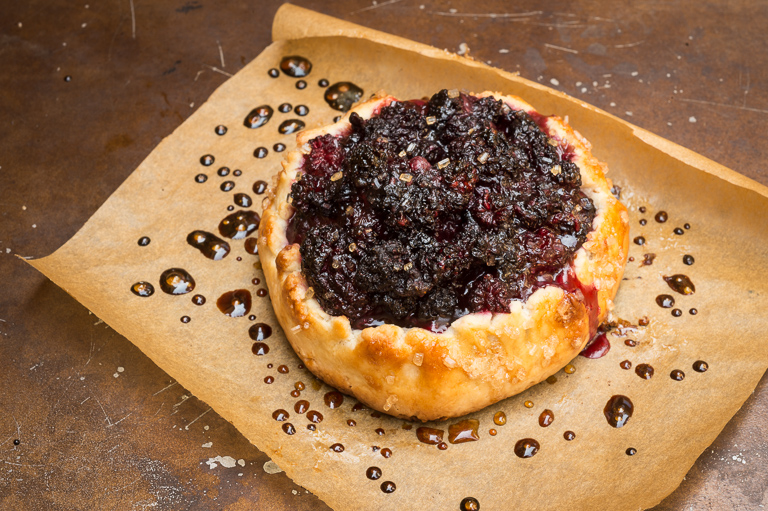
METHOD: For the dough, combine the flour, sugar and salt in a food processor and pulse a few times to thoroughly combine. Gradually add the butter and cream cheese while continuing to pulse the food processor. The mixture will go from a sandy texture to small pebble-like curds. Do not over-process.
Transfer the dough to a bowl and sprinkle the lemon juice over the dough, then fold to combine with a rubber scraper. Dough should hold together when compressed gently in your hand.
Divide dough into six equal portions with a knife or rubber scraper, form into small, biscuit-like rounds, cover with plastic wrap and chill for at least half an hour (or overnight).
Pour the washed, slightly damp berries into a bowl and add the sugar, flour, lemon juice and melted butter. Gently combine with a rubber scraper.
Preheat oven to 400º Fahrenheit. Place each round of dough between two sheets of parchment paper and use a rolling pin to flatten them into 6-inch diameter disks, about 1/8-inch thick. Remove the top parchment and trim the bottom parchment to about one inch from the dough. Carefully curl up the edges with your fingers, and make a bowl by pinching the sides of the dough. Fill each tartlet with the berry mixture and fold the edges of the tarts over the berries slightly. Transfer the tartlets on their squares of parchment paper to a baking sheet and bake for 15 minutes.
Remove the tarts from the oven, brush the edges with egg white and sprinkle with turbinado sugar. Return them to the oven for another 10 to 15 minutes, remove them and let them cool for 5 to 10 minutes and then gently peel off the parchment paper.
A scoop of vanilla ice cream is an ideal accompaniment when they are still warm. Makes 6 tartlets.

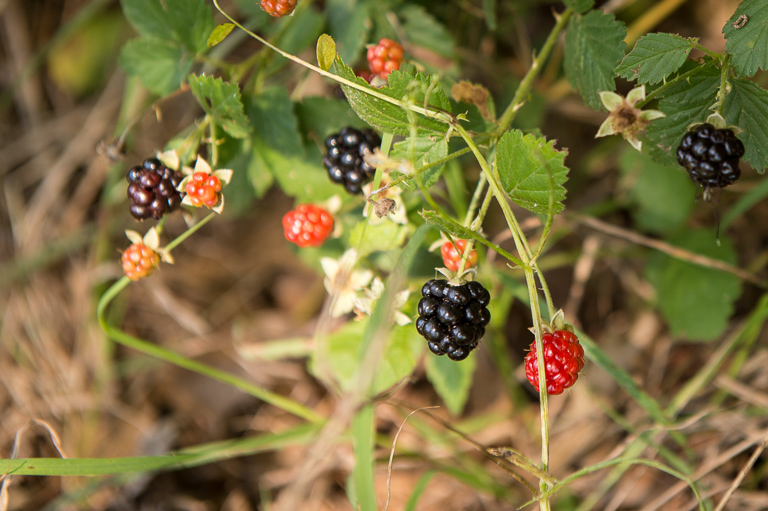



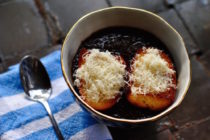



Follow Us